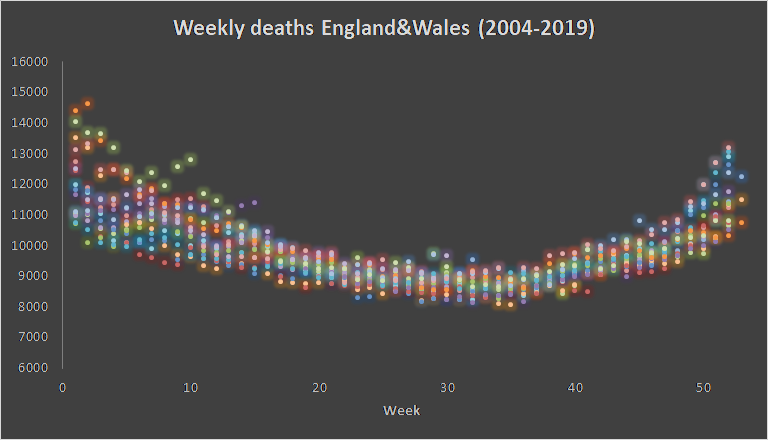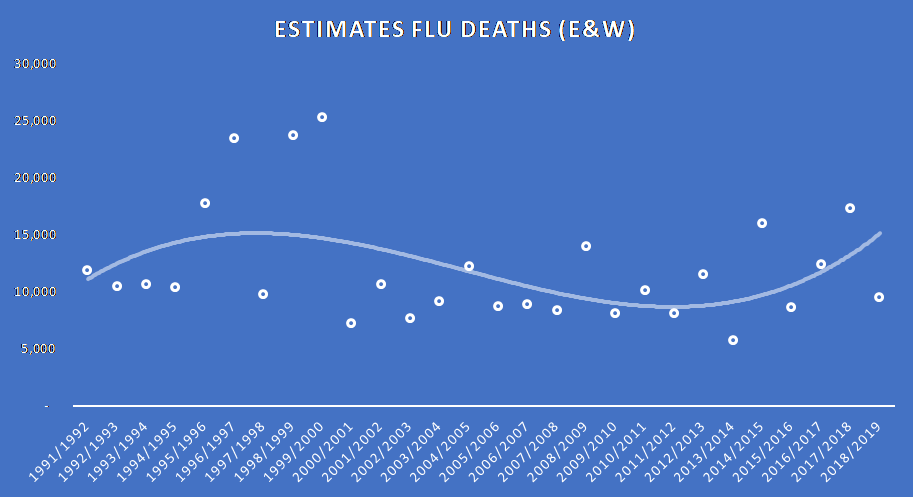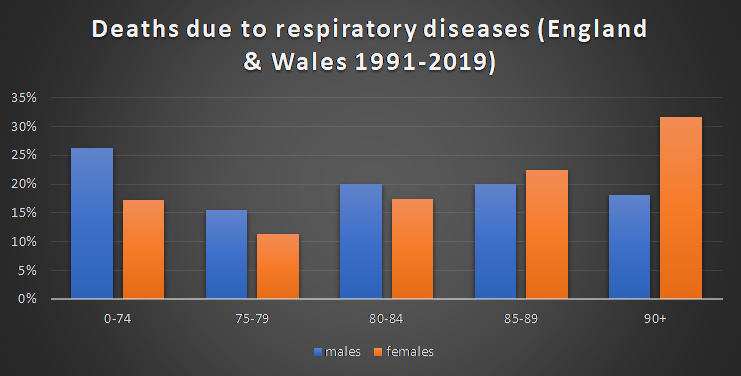Data shows that COVID-19 is more lethal than the flu and why we need to avoid a second wave
As at 22nd April 2020 there were more than 2.5 million COVID-19 cases worldwide with more than 170,000 deaths according to John Hopkins University. A recent study estimated that an average of 389,000 respiratory deaths were associated with influenza (‘flu’) globally each year.
In comparison the UK COVID-19 cases as at 22nd April were 129,044 with 17,377 (hospital) deaths. So how do these coronavirus deaths compare with the estimated flu deaths?
Weekly all death data
Let’s start by taking a look at the total weekly deaths (due to all causes) in England & Wales (E&W). Each dot on the chart represents the weekly death total in E&W from 2004-2019. One average there are about 10,000 deaths each week in E&W. However, there are more deaths in the winter than in the summer weeks. In fact, the weekly winter deaths can be up to 4000 more than than than the average in some years.

According to the ONS, the provisional number of deaths (including hospital and those outside hospital) registered in E&W in the week ending 10 April 2020 (week 15) was 18,516. This is much higher than the flu death peak in week 2 of 2015 in the chart when there were 14,612 deaths in E&W.
Estimating the flu deaths
According to the WHO, the flu is a respiratory disease caused by a viral infection that affects the lungs and airways. The flu occurs most often in winter in the UK and peaks between January and March.
Guided by these two indicators we use the data for excess winter (respiratory) deaths in E&W to estimate the impact of the flu from 1991-2019. Each white dot in the chart represents the total flu deaths for the year. There were 9,500 flu deaths during 2018/19 and 17,340 deaths during 2017/18. Significantly, estimated flu deaths have started trending upwards recently. They previously peaked at about 25,000 in 1999/2000.

Flu risk factors
The analysis further shows that every 3 in 4 flu deaths are for those over 74. Unlike coronavirus, the flu appears to be less deadly for young people. The data further shows that males have a higher risk exposure to the flu up to the age of 84, however beyond this age females have a higher risk exposure.

So what does this all mean?
Research suggests that COVID-19 is more than twice as contagious as the flu. Each person with coronavirus can potentially infect between 2-4 people in the absence of social distancing. The high transmission rate means that there is always a chance of a second coronavirus when the social distancing measures are relaxed.
It is not clear how much of an overlap there is in the current coronavirus and flu deaths. However, if a second wave of coronavirus (without a vaccine) coincides with the flu this winter the outcome could be catastrophic particularly if the flu becomes more severe this winter in line with it’s worsening trend. This is something policymakers need to plan for in advance.
10,300 total views